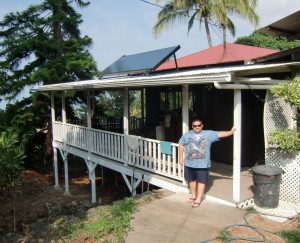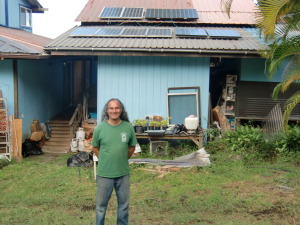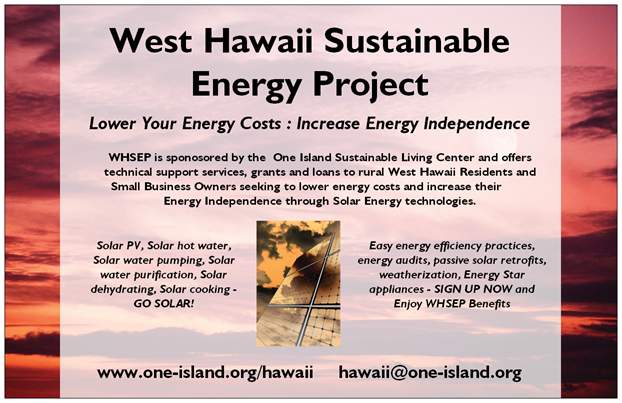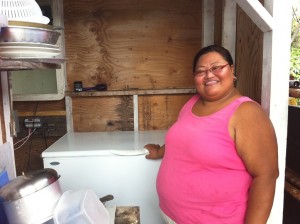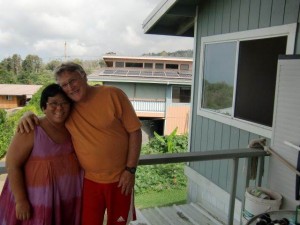GOALS The 2009-2013 goals of the West Hawaii Sustainable Energy Project were to:
1) lower energy costs by assisting with acquiring and upgrading solar PV electric, hot water, refrigeration, UV water purification, water pumping equipment
2) foster energy independence and improved public safety
3) strengthen local community capacity to increase energy efficiency and conservation
4) assist rural residents in developing grant proposal writing skills.
Over 2,500 Hawaiian residents benefited from the project that served 159 households and 26 farms, schools, non-profits and small businesses. Cost savings are over $1.528 million over 5 years, and greenhouse gas emissions are being reduced by over 1,521 tons.
Reports about the West Hawaii Sustainable Energy Project
USC GIS mapping project – check out our new ‘geographic information system’ mapping project that is showcasing WHSEP accomplishments using GIS mapping tools. A big Mahalo to Caroline Carl and Karen Kemp of the University of Southern California for their assistance in developing this very useful data visualization tool to help tell the WHSEP story. We are very proud of the positive impacts this project is having and will be developing several tools to help tell the success stories – and challenges – of the solar energy project.
Yale University energy efficiency study that featured WHSEP accomplishments
OBJECTIVES The project objectives were to provide technical assistance and grant funding for equipment to assist local residents in implementing practices that lower their energy costs and create more self reliant power systems. WHSEP served residential, small farm, non-profit, and small business locations.
METHODS Methods WHSEP deployed include energy conservation practices, grant proposal writing support and training, and cost saving energy efficient equipment and practice installations. Main features were solar renewable technology installations including hot water, water purification, refrigeration, water pumping, and off-grid /grid-tied energy generation. The project’s technical assistance services, grant awards, and pre/post award energy analysis was focused on providing physical equipment and tools that resulted in measurable energy savings for rural residents.
Outcomes
185 applicants enrolled in the program and received equipment grants between $400 and $10,000, with 159 receiving a standard $5,000 equipment grant. Outcomes include:
• higher engagement in energy efficiency practices / lower energy consumption
• lower energy costs compared to previous costs that are up to 4x US average
• improved access to healthy and reliable foods via solar refrigeration
• clean, reliable energy to operate essential medical equipment for chronically ill located in remote off-grid areas
• local economy-building green jobs
• $ 305,640 in electric, gas and propane avoided costs per year; $1 ,528,200 in savings estimated over 5 years
• 108 adopted solar renewable energy for the first time
• 37 added to an existing solar system
• 48 installed their first non-gasoline-generator electricity systems
• 41 installed solar electric refrigerators to improve health and nutrition for the their families (8 of those are getting their first ever refrigeration, 23 are replacing a propane fridge)
• 25 are using solar ovens for the first time
• 81 applicants are using off-grid where regular electric service is not available or is cost prohibitive
• 2 installed solar compost toilets
• 8 are installed irrigation pumping
• 14 installed household water pumping (4 of which are ultraviolet)
Job Creation – 9 internal jobs created, 12 Jobs retained or created at participating vendors
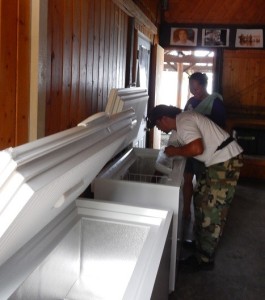 WHSEP recruited a team of project consultants bringing expertise in energy efficiency, solar technology, community program facilitation, Native Hawaiian, and island sustainability-policy interests. In addition to the project director, eight other consultants served in Outreach and Technical Assistance positions over the life of the project. At a time when our local economy was hard hit by a down turn in tourism income and shrinking construction work, USDA support created jobs in our community. USDA support also helped participating small businesses to operate at lower costs, retain and create new jobs, and circulated new revenues in the wider community through solar retrofits, micro-power systems, and mobile solar technologies that earned local vendor’s employee wages that were then used in local purchases.
WHSEP recruited a team of project consultants bringing expertise in energy efficiency, solar technology, community program facilitation, Native Hawaiian, and island sustainability-policy interests. In addition to the project director, eight other consultants served in Outreach and Technical Assistance positions over the life of the project. At a time when our local economy was hard hit by a down turn in tourism income and shrinking construction work, USDA support created jobs in our community. USDA support also helped participating small businesses to operate at lower costs, retain and create new jobs, and circulated new revenues in the wider community through solar retrofits, micro-power systems, and mobile solar technologies that earned local vendor’s employee wages that were then used in local purchases.
Carbon Footprint
As a result of USDA HEC investment in rural Hawaii, over 608,400 pounds / 304 tons of carbon dioxide green house gas emissions are being avoided annually. 3,042,000 pounds / 1,521 tons are being avoided over five years.
One outcome-indicator we quantified was an anticipated change in our participants’ collective carbon footprint. Following installation they track, measure and report changes in their behavior, purchasing and use, at 6 and 12 month points. By calculating change in their consumption and emissions, we were able to demonstrate a significant change in fossil fuel use which lowered their carbon footprint, as well as lowering air pollution and associated health risks. These figures demonstrate significant community-wide environmental, traffic and air quality benefits derived from the USDA funding.
SPONSORS The Energy Project was managed by Heritage Ranch, Inc., a 501c3 non-profit and is based at the One Island Sustainable Living Center. The USDA Rural Development Service is the primary funding source for WHSEP with additional support from HUD Rural Housing and Economic Development.
This project was supported in part with funds from the United States Department of Agriculture, Rural Development, Rural Utilities Service.
NON-DISCRIMINATION STATEMENT
“The U.S. Department of Agriculture (USDA) prohibits discrimination in all its programs and activities on the basis of race, color, national origin, sex, religion, age, disability, political beliefs, sexual orientation, and marital or family status. (Not all prohibited bases apply to all programs.) Persons with disabilities who require alternative means for communication of program information (Braille, large print, audiotape, etc.) should contact USDA’s TARGET Center at (202) 720-2600 (voice and TDD).
To file a complaint of discrimination write USDA, Director, Office of Civil Rights, Room 326-W, Whitten Building, 14th and Independence Avenue, SW, Washington, DC 20250-9410 or call (202) 720-5964 (voice or TDD). USDA is an equal opportunity provider and employer.”



